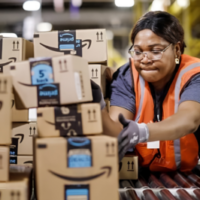Summary
On September 6, 2017, Deborah Berkowitz spoke at a Forum hosted by Representatives Mark Pocan, Donald Norcross, Debbie Dingell and Mark DeSaulnier on the need for Congress to prohibit line speed ups and encourage OSHA to robustly enforce health and safety laws in the poultry industry. Almost all top poultry companies are major federal contractors and receive millions each year from taxpayers to subsidize the cost of making America’s cheap chickens.
Related to
Related Resources
All resourcesNELP and Partners File Amicus Brief Defending Minimum Wage and Overtime Protections for Homecare Workers

Amicus Brief
Letter in support of civil rights protections in the workplace under NLRB and EEOC laws

Comments & Letters
Amazon’s Outsized Role: The Injury Crisis in U.S. Warehouses and a Policy Roadmap to Protect Workers

Report

